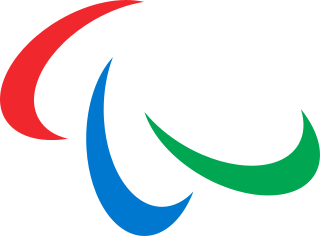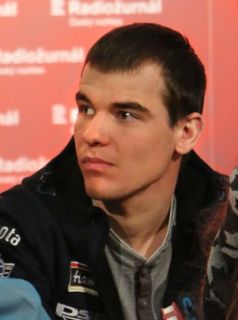
The 1994 Winter Olympics, officially known as the XVII Olympic Winter Games and commonly known as Lillehammer '94, was an international winter multi-sport event held from 12 to 27 February 1994 in and around Lillehammer, Norway. Having lost the bid for the 1992 Winter Olympics to Albertville in France, Lillehammer was awarded the 1994 Winter Games on 15 September 1988, at the 94th IOC Session in Seoul, South Korea. This was the only Winter Olympics to take place two years after the previous edition of the Winter Games, and the first to be held in a different year from the Summer Olympics. This was the second Winter Games hosted in Norway — the first being the 1952 Winter Olympics in Oslo — and the fourth Olympics overall to be held in a Nordic country, after the 1912 Summer Olympics in Stockholm, Sweden, and the 1952 Summer Olympics in Helsinki, Finland. Lillehammer is the northernmost city ever to host the Olympic Games. This was the last of three consecutive Olympics held in Europe, with Albertville and Barcelona in Spain hosting the 1992 Winter and Summer Games, respectively.

The biathlon competition at the 1994 Winter Olympics were held at the Birkebeineren Ski Stadium. The events were held between 18 and 26 February 1994.

Mark Kirchner is a German former biathlete.
The Men's 10 kilometre sprint biathlon competition at the 2006 Winter Olympics in Turin, Italy was held on 14 February, at Cesana San Sicario. Competitors raced over three loops of the 3.3 kilometre skiing course, shooting ten times, five prone and five standing. Each miss required a competitor to ski a 150-metre penalty loop.

Paralympic cross-country skiing is an adaptation of cross-country skiing for athletes with disabilities. Paralympic cross-country skiing is one of two Nordic skiing disciplines in the Winter Paralympic Games; the other is biathlon. Competition is governed by the International Paralympic Committee (IPC).

Biathlon debuted at the 1960 Winter Olympics in Squaw Valley, California with the men's 20 km individual event. At the 1968 Winter Olympics in Grenoble, the men's 4 × 7.5 km relay debuted, followed by the 10 km sprint event at the 1980 Winter Olympics in Lake Placid, New York. Beginning at the 1992 Winter Olympics in Albertville, women's biathlon debuted with the 15 km individual, 3 × 7.5 km relay, and 7.5 km sprint. A pursuit race was included at the 2002 Winter Olympics in Salt Lake City. The top 60 finishers of the sprint race would qualify for the pursuit event. The sprint winner starts the race, followed by each successive biathlete at the same time interval they trailed the sprint winner in that event. At the 2006 Winter Olympics in Turin, a mass start was introduced where the top 30 biathletes from the previous four events were allowed to start together for the competition.

The 2016 Winter Youth Olympics, officially known as the II Winter Youth Olympic Games, took place in and around Lillehammer, Norway, between 12 February and 21 February 2016. They were the fourth Youth Olympic Games and the second winter edition. Lillehammer was awarded the games on 7 December 2011 as the only candidate. The games reused venues from the 1994 Winter Olympics; this made Lillehammer the first city to host both regular and Youth Olympics. In addition to Lillehammer, sports were contested in Hamar, Gjøvik and Øyer.

Birkebeineren Ski Stadium is a cross-country skiing and biathlon venue located in Lillehammer, Norway. Situated 3 kilometers (2 mi) from the town center and at 485 meters (1,591 ft) above mean sea level, it has two stadium areas, one for cross-country and one for biathlon. The former has a capacity for 31,000 spectators, and the latter for 13,500. The venue was built for the 1994 Winter Olympics, costing 83.6 million Norwegian krone (NOK). It was subsequently used by the 1994 Winter Paralympics for Paralympic Nordic skiing and Paralympic biathlon. After the games, ownership was transferred to the municipal Lillehammer Olympiapark. The venue has since been used for one Biathlon World Cup, three FIS Cross-Country World Cup and nine FIS Nordic Combined World Cup tournaments, the latter with the ski jumping competition taking place at the nearby Lysgårdsbakkene Ski Jumping Arena. Birkebeineren hosted the 2016 Winter Youth Olympics.

Lillehammer Olympiapark AS, trading as Olympiaparken, is a company established following the 1994 Winter Olympics to operate the Olympic venues in Lillehammer, Norway. Owned by Lillehammer Municipality, it operates five sports venues: Birkebeineren Ski Stadium, Håkons Hall, Lillehammer Olympic Bobsleigh and Luge Track, Kanthaugen Freestyle Arena and the ski jumping hill of Lysgårdsbakken. In addition to serving sports events, the company provides tourist and group activities at the venues as well as catering to larger events.
Michael Dixon, is a Scottish cross-country skier and biathlete. He has represented Great Britain at six Olympic Games in cross-country skiing and biathlon. He is only the seventh athlete from any country to have competed at six Winter Games and is one of fewer than fifty athletes to have competed in at least six Olympic Games.

The 1994 Winter Olympics were held in and around Lillehammer, Norway, from 12 to 27 February 1994. Ten competition and fourteen non-competition venues were used, most of which were subsequently used for the 1994 Winter Paralympics. The Games were spread out over ten venues in five municipalities in two counties, Oppland and Hedmark. Lillehammer, with approximately 25,000 inhabitants, and Hamar and Gjøvik, both with approximately 27,000 inhabitants, are all situated on the lake Mjøsa. Gjøvik and Hamar are 45 and 54 kilometers south of Lillehammer, respectively. Hunderfossen is 15 kilometers (9.3 mi) north of Lillehammer, but located within the municipality. Øyer and Ringebu, each with just under 5,000 inhabitants, are 18 and 50 kilometers north of Lillehammer, respectively, in the valley Gudbrandsdalen. Lillehammer had four competition venues, Hamar had two competition venues, while Hunderfossen, Gjøvik, Øyer and Ringebu had one competition venue each.
The men's 4 × 10 km relay, a part of the cross-country skiing at the 1994 Winter Olympics, took place on 22 February at Birkebeineren Ski Stadium in Lillehammer, Norway. The race saw Italy beat Norway by 0.4 seconds on the finish line, with Finland finishing third. The three had followed each other closely through the first three rounds, but in the fourth heat, Silvio Fauner and Bjørn Dæhlie managed to break with Jari Isometsä. The event was the best attended of any in the games, with an estimated 100,000 spectators at the stadium and along the tracks. About 203,000 people applied for the 31,000 seats at the stadium, and some 75,000 ultimately watched from the track-side.
The Men's biathlon relay competition of the Lillehammer 1994 Olympics was held at Birkebeineren Ski Stadium on February 26, 1994. Each national team consisted of four members, with each skiing 7.5 kilometres and shooting twice, once prone and once standing.
The Women's biathlon 15 km individual competition of the Lillehammer 1994 Olympics was held at Birkebeineren Ski Stadium on 18 February 1994.
The Men's 10 kilometre sprint biathlon competition at the 1998 Winter Olympics was held on 18 February 1998, at Nozawa Onsen. Competitors raced over two 3.0 kilometre loops and one 4.0 kilometre loop of the skiing course, shooting two times, once prone and once standing. Each miss was penalized by requiring the competitor to race over a 150-metre penalty loop.
The men's 20 kilometre individual biathlon competition at the 1994 Winter Olympics was held on 20 February, at Birkebeineren Ski Stadium. Each miss resulted in one minute being added to a competitor's skiing time.
The Women's 7.5 kilometre sprint biathlon competition at the 1994 Winter Olympics was held on 23 February, at Birkebeineren Ski Stadium. Each miss was penalized by requiring the competitor to race over a 150-metre penalty loop.
The Men's 10 kilometre sprint biathlon competition at the 1992 Winter Olympics was held on 12 February, at Les Saisies. Competitors raced over three loops of the skiing course, shooting two times, once prone and once standing. Each miss was penalized by requiring the competitor to race over a 150-metre penalty loop.

Michal Krčmář is a Czech biathlete. At the 2018 Winter Olympics he finished second in the 10 km sprint event.

Cheng Fangming is a Chinese biathlete. He competed in the 2022 Winter Olympics.











